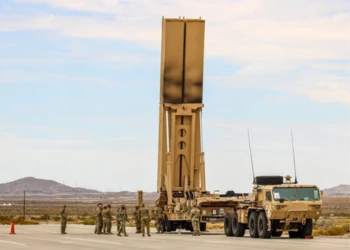What’s on the Radar in the Military Antenna World
Add bookmarkReliable and uninhibited communication is a vital component in any military operation and the effective delivery of up-to-the-minute information-sharing capability is an area being rigorously pursued by the Department of Defense.
Against a backdrop of financial constraints, the improvement, integration and implementation of the latest technologies remain a priority in supporting warfighter efforts.
The advancement of radio frequency communications will be the focus of IDGA’s Military Antennas West conference next month.
At the heart of the industry is the effort to ensure that the development of ground, air, sea, and space-based antennas keep up with the latest moves in software radios, vehicle communications systems and SATCOM.
[inlinead]
A lot of attention is being paid to so-called "hot technology," such as small wideband antennas, meta-material antennas, GPS programs, superconducting RF systems and the DoD has been investing $1.2 billion a year in research and development.
In such a technology-driven market, the sheer number of antenna systems available has caused a wide variety of challenges for the military.
The market for defense, government and Homeland Security antennas is fragmented, with many small projects in existence and just a few large programs.
More attention is now being paid to miniaturization, the consolidation of antennas and efforts to make antennas lighter and cheaper.
DARPA is leading the charge with increased funding for several programs this year. They include the Command, Control and Communications Systems program ($16 million), the Communications Under Extreme RF Spectrum Conditions ($13 million) and the Multifunction RF program at a cost of $26 million.
David Barnhart, the agency’s Program Manager in the Phoenix Tactical Technology Office, will explore emerging initiatives at the IDGA event next month.
Chris Atherton, Technical Director for Long Range Radar at Lockheed Martin, says the defense contractor giant is currently working on a major update for the U.S. Air Force’s Atmospheric Early Warning System.
The project involves the modernization of 29 U.S. Air Force AN/FPS-117 long-range surveillance radars, including 15 in Alaska, which the Obama administration believes would be most vulnerable in the event of an attack from North Korea. Eleven of the upgraded radars are in Canada, with one in Hawaii, Puerto Rico, and Utah.
At Lockheed Martin’s facility in Syracuse, New York, engineers working on the Essential Parts Replacement Program are replacing and updating all the radars’ data and signal processors to state-of-the-art commercial technology to help extend their operational lives through 2025.
The contract is worth a cool $46.8 million, he added.
Developments in antennas and radar will ultimately benefit from advancements in the global wireless market, radio frequency expert Dr. Joseph R. Guerci believes.
He said: "The problem of radar and wireless communications networks occupying the same frequency bands is beginning to get the attention of major government and industry groups.
"For example, in 2011, the National Telecommunications and Information Administration (NTIA), under the auspices of the U. S. Department of Commerce, held a symposium on International Symposium on Advanced Radio Technologies (ISART) focused on Developing Forward Thinking Rules and Processes to Fully Exploit Spectrum Resources: An Evaluation of Radar Spectrum Use and Management.
"While no ‘simple solutions’ were identified a number of key technologies and operating concepts were identified.
"The global wireless market represents trillions of dollars which greatly dwarfs the radar market and puts more pressure on radar to adopt.
"Frankly, I think it’s a good thing! Cognitive radar has far more benefits beyond "‘spectral adaptivity’." So radar will come out of this even more effective than today!"
The issue of interference, along with many other antenna-related topics, will be discussed in-depth at IDGA’s Military Antenna West in San Diego, California, from April 22-24.
For more details, go to www.MilitaryAntennasevent.com
Share your thoughts. Leave a comment below.









